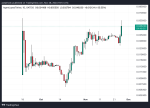Last updated:
 Why Trust Cryptonews
Why Trust Cryptonews
Ad Disclosure
We believe in full transparency with our readers. Some of our content includes affiliate links, and we may earn a commission through these partnerships. Read more

The European Securities and Markets Authority (ESMA) has ordered crypto-asset service providers (CASPs) to delist stablecoins that do not comply with the Markets in Crypto-Assets Regulation (MiCA).
However, while pushing for this delisting, ESMA did not specify which non-compliant issuers or stablecoins should be restricted.
The document follows the European Commission’s July 2024 guidance clarifying how MiCA applies to crypto-asset services involving non-compliant stablecoins.
ESMA Provides Clarity on Crypto-Asset Services
MiCA, which came into effect on June 30, 2024, establishes a regulatory framework for the issuance and trading of asset-referenced tokens (ARTs), or stablecoins, and electronic money tokens (EMTs).
MiCA is officially live! 🇪🇺
After years of consultation, heated debates, contemplated bitcoin bans, last-minute amendments, and countless votes, MiCA now (actually since Dec 30 2024) officially applies to crypto-asset issuers and service providers in the EU – even if the latter… pic.twitter.com/3ZTH0KjkIC
— Patrick Hansen (@paddi_hansen) January 2, 2025
Prior to this directive, the European Banking Authority (EBA) had already urged stakeholders to assess the MiCA compliance of the tokens they offer and cease providing services related to non-compliant assets.
The European Commission’s recent Q&A also explains how certain crypto-asset services, like executing trades and exchanging cryptocurrencies, could be seen as offering non-compliant stablecoins to the public, potentially breaking MiCA regulations.
According to the new ESMA guidance, individuals or entities other than the original issuer of an ART or EMT can offer these tokens to the public or seek to have them listed on trading platforms.
However, this is only permissible under specific conditions. One condition is that the issuer of the ART or EMT must be authorized to operate within the EU. Additionally, the entity or individual making the offer must obtain written consent from the original issuer.
“Sell-Only” Period for Non-Compliant Stablecoins
While ESMA emphasizes the importance of restricting services that enable the purchase of non-compliant stablecoins, it recognizes the need for a smooth transition.
Therefore, a limited “sell-only” period will be permitted until the end of the first quarter of 2025, allowing investors to liquidate their existing holdings of these assets.
Additionally, ESMA mandates that CASPs clearly inform investors about how MiCA will affect their non-compliant stablecoin holdings and implement measures to assist them in liquidating these holdings or converting them into compliant alternatives.
This includes providing clear and concise information about the restrictions imposed by MiCA and the potential consequences for investors holding non-compliant stablecoins.
Tether’s USDT Faces EU Delisting Amid MiCA Regulatory Deadline
Tether’s USDT, the largest stablecoin by market capitalization, is likely to face restrictions and is on the verge of being delisted from several cryptocurrency exchanges in the EU.
In December 2024, Coinbase delisted USDT from its European platforms along with other non-compliant stablecoins in order to comply with MiCA.
Coinbase’s action is indicative of a broader trend, as other exchanges may be preparing to delist USDT in the coming months.
Other than Coinbase (who is invested in Circle) no other exchange has plans to delist USDt in the short term for European users. Local European regulators have a grace period of more than 12 months.
For the FUDsters, which exchanges have announced the delisting of USDt for… pic.twitter.com/Mtvyx5Exij
— Samson Mow (@Excellion) December 29, 2024
Tether, in response, is reportedly working on developing MiCA-compliant alternatives, although the timeline for these new offerings remains unclear. This leaves a significant gap in the market, potentially benefiting competitors like Circle’s USD Coin (USDC), which is already compliant.
Moreover, there are speculations around other stablecoins like Ripple’s RLUSD stepping in to fill the void left by USDT.
Ripple CEO announces that USDT will be delisted from 90% of major exchanges, with #RLUSD set to replace it, built on the #XRP Ledger! pic.twitter.com/fMrGWd81Si
— Levi | Crypto Crusaders (@LeviRietveld) December 13, 2024
In a Bloomberg report, Pascal St-Jean, CEO of crypto asset manager 3iQ Corp., said that “a vast proportion of crypto assets trade in pairs against Tether’s USDT.” He added that switching to other stablecoins or fiat pairs could create inefficiencies for investors.
The new regulation also raises concerns about Europe’s position in the global crypto market, as stringent regulations might push investors and innovation towards regions with less restrictive environments.
Some industry executives, such as Gemini’s head of Europe, have recently highlighted the lack of clarity surrounding stablecoin regulations under the new framework.




